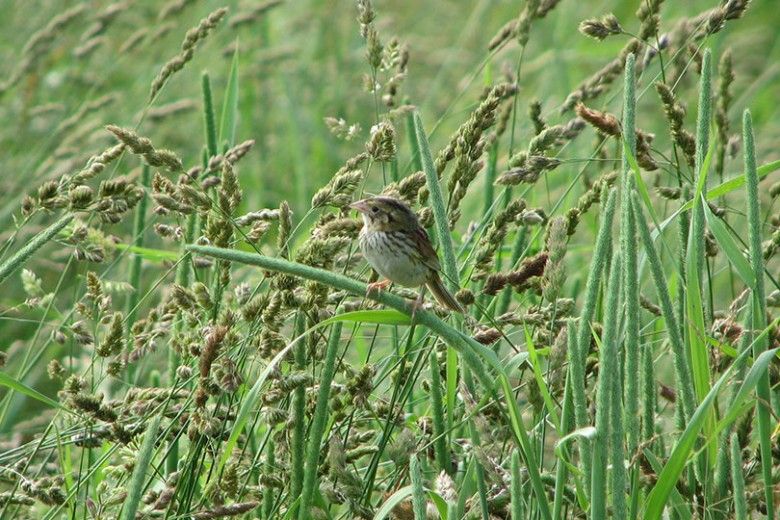Conservation Works: Ask A Henslow’s Sparrow

What you do on your own property can make a difference in the health of our ecosystem and help to reverse the alarming decline of wildlife.
Just ask the Henslow’s sparrow, pictured here perched in an unmowed, unplanted field on Conservancy-protected land. This kind of field is the preferred habitat of the Henslow’s sparrow – and an increasingly rare sight in our region.
In Pennsylvania the Henslow’s sparrow typically breeds only in western counties, and that is because of the many reclaimed strip mine sites that have been planted with native grasses. As those sites age, they revert to woodlands, so the Henslow’s sparrow population is declining. In Delaware, the bird doesn’t breed at all; it’s listed as Endangered.
Continent-wide, the Henslow’s sparrow population has been in freefall. But the sparrow has benefitted in areas where farmers have taken conservation measures -- particularly practices funded by the federal Conservation Reserve Program or CRP, which pays farmers to replant cropfields with natural areas that support wildlife (and improve water quality to boot). Where farmers have set aside the kind of habitat the Henslow’s sparrow favors, its population has rebounded. In 2018 the sparrow’s status in North America was upgraded from Near Threatened to Least Concern. For biologists, that’s the equivalent of “Hallelujah!”
Henslow’s sparrow’s preferred habitat is a large weedy grassland. The sparrow hunts for insects and seeds on the ground, and it tends to run to escape predators rather than fly away. It prefers fields that have tall, dense grasses, standing dead vegetation, and thick ground litter, without shrubs. Historically these fields used to be more common in our region when farmers would let fields lie fallow, or cut hay only once a year.
The new Farm Bill, signed into law in December 2018, includes expanded funding for CRP -- good news for the Henslow’s sparrow, and other birds that will benefit from conservation practices on working lands.
But you don’t need federal funding to take actions that will help wildlife. Just set aside some areas of your property, large or small, to provide for the needs of your fellow creatures – birds, butterflies, bats, bees. Here are a few ideas to get you started. Conservancy staff are available to help provide more information and resources.